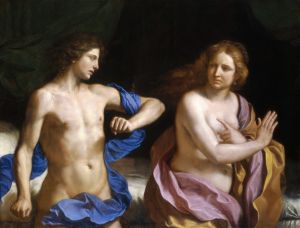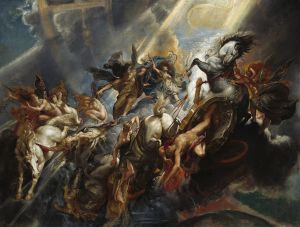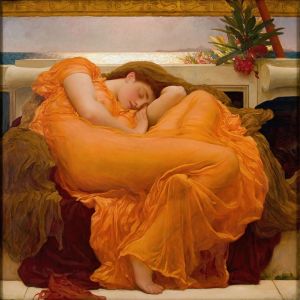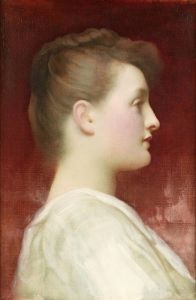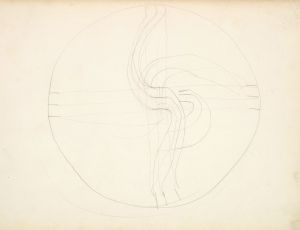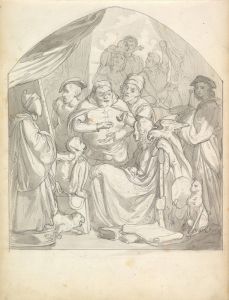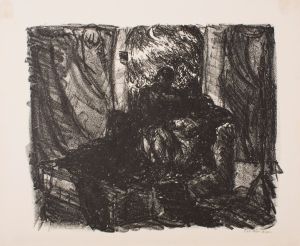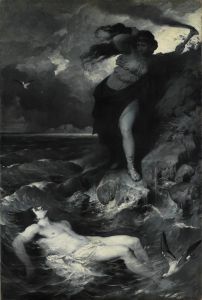
Orpheus And Eurydice
A hand-painted replica of Frederic Leighton’s masterpiece Orpheus And Eurydice, meticulously crafted by professional artists to capture the true essence of the original. Each piece is created with museum-quality canvas and rare mineral pigments, carefully painted by experienced artists with delicate brushstrokes and rich, layered colors to perfectly recreate the texture of the original artwork. Unlike machine-printed reproductions, this hand-painted version brings the painting to life, infused with the artist’s emotions and skill in every stroke. Whether for personal collection or home decoration, it instantly elevates the artistic atmosphere of any space.
Frederic Leighton, an eminent British artist of the 19th century, is renowned for his contributions to the academic art movement. Among his notable works is the painting "Orpheus and Eurydice," which captures a poignant moment from the classical myth of Orpheus, a legendary musician, and his wife, Eurydice. This myth has been a rich source of inspiration for artists, writers, and musicians throughout history, and Leighton's interpretation is a testament to his mastery of form, composition, and emotion.
Leighton was born in 1830 and became a leading figure in the Victorian art world. He was deeply influenced by the classical traditions of art, which is evident in his choice of subject matter and his meticulous attention to detail. "Orpheus and Eurydice" exemplifies these qualities, showcasing his ability to convey complex emotions through the human figure.
The painting depicts the tragic moment when Orpheus, having descended into the Underworld to retrieve Eurydice, loses her forever. According to the myth, Orpheus was granted permission to lead Eurydice back to the world of the living on the condition that he must not look back at her until they had both reached the surface. However, overcome by doubt and longing, Orpheus turns to look at Eurydice, causing her to vanish forever. This moment of loss and despair is captured with great sensitivity by Leighton.
In "Orpheus and Eurydice," Leighton employs a classical style, characterized by its idealized forms and harmonious composition. The figures of Orpheus and Eurydice are rendered with a graceful elegance, their poses and expressions conveying the depth of their emotional turmoil. The use of light and shadow enhances the dramatic tension of the scene, drawing the viewer's eye to the central figures and emphasizing their isolation in the vast, shadowy landscape of the Underworld.
Leighton's palette is typically restrained, with muted tones that reflect the somber mood of the narrative. The subtle interplay of colors adds to the overall sense of melancholy, reinforcing the tragic nature of the story. The artist's skillful use of color and composition not only highlights the emotional intensity of the scene but also underscores the timeless nature of the myth.
"Orpheus and Eurydice" is a reflection of Leighton's broader artistic philosophy, which sought to elevate the human spirit through beauty and classical ideals. His work is characterized by a deep appreciation for the art of antiquity, and his paintings often explore themes of love, loss, and redemption. This particular painting is a fine example of how Leighton was able to blend narrative and aesthetics to create a work that resonates with viewers on both an intellectual and emotional level.
Frederic Leighton's "Orpheus and Eurydice" remains an important work within the canon of 19th-century art. It not only showcases the artist's technical prowess but also his ability to engage with timeless themes in a way that is both visually stunning and emotionally compelling. Through this painting, Leighton invites viewers to reflect on the enduring power of myth and the universal experiences of love and loss.






